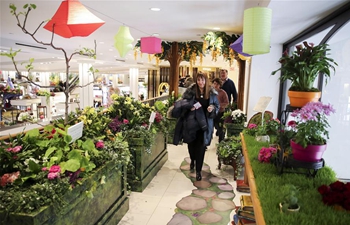LOS ANGELES, March 27 (Xinhua) -- The U.S. National Aeronautics and Space Administration (NASA) will enhance the view of Earth's frozen regions with two new satellite missions and an array of field research in 2018, the U.S. space agency said Tuesday in a report.
Some of the most remote places on Earth are showing signs of change, with potentially global impacts. Collectively, scientists call these frozen regions of our planet the "cryosphere."
While it is often occurring in remote regions, ongoing change with the cryosphere has potentially impacts on people all around the world: Sea level rise affects coastlines globally, billions of people rely on water from snowpack, and the diminishing sea ice that covers the Arctic Ocean plays a significant role in Earth's climate and weather patterns.
This spring, NASA and the German Research Centre for Geosciences are scheduled to launch the Gravity Recovery and Climate Experiment Follow-On (GRACE-FO) mission, which will continue the original GRACE mission's legacy of tracking fluctuations in Earth's gravity field in order to detect changes in mass, including the mass of ice sheets and aquifers, according to the space agency.
This fall, NASA plans to launch the Ice, Cloud, and Land Elevation Satellite-2 (ICESat-2), which will use a highly advanced laser instrument to measure the changing elevation of ice around the world, providing a view of the height of Earth's ice with greater detail than previously possible.
By using radically different techniques, both missions will make other key observations. For instance, GRACE-FO will measure groundwater reserves and deep ocean currents. ICESat-2 will measure sea ice thickness and vegetation height.
Also, this year will see the continuation of two major cryosphere airborne and field campaigns: Operation IceBridge, which has provided a multi-dimensional view of Greenland, Antarctica, and sea ice since 2009, and the NASA's Jet Propulsion Laboratory (JPL)-managed Oceans Melting Greenland, which is focused on the interaction between ocean waters and Greenland's glaciers that terminate in the ocean. Both campaigns began Greenland deployments in March.












